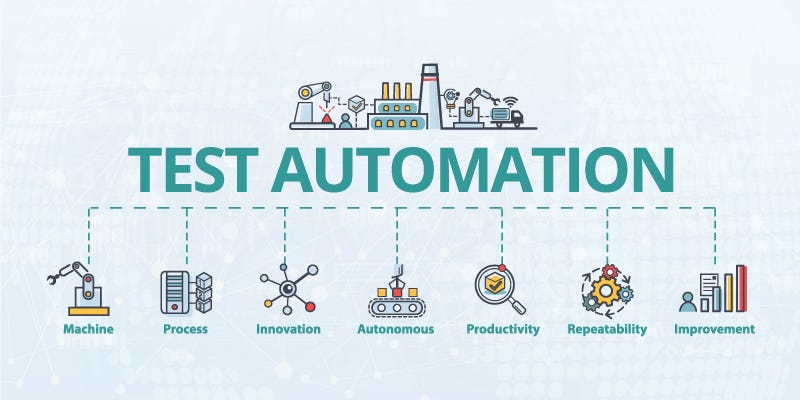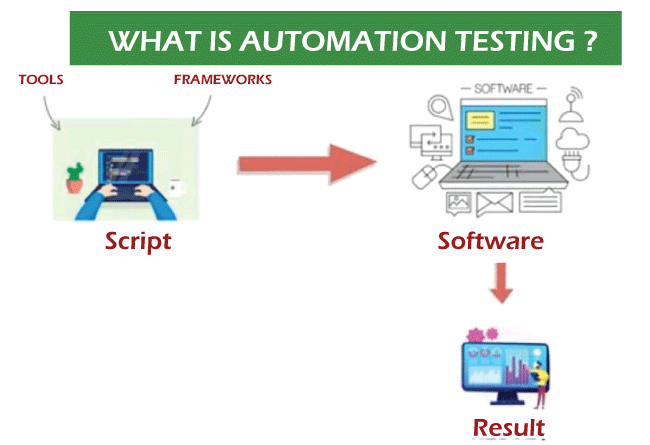Picking the Right Equipment for Effective Automation Testing Solutions
Picking the Right Equipment for Effective Automation Testing Solutions
Blog Article
From Handbook to Automated Screening: A Comprehensive Guide to Transitioning Efficiently and Efficiently
In the realm of software screening, the shift from guidebook to automated processes has actually ended up being a significantly vital transition for companies seeking to enhance effectiveness and accuracy in their screening techniques. As technology continues to advancement, the requirement for efficient and seamless automatic testing methods has never been more pressing. The journey from guidebook to automated screening is not without its obstacles, yet when come close to strategically and with a clear plan in mind, the advantages can be substantial - automation testing. In this extensive overview, we will certainly explore crucial actions and considerations essential for a successful change, from the first choice of tools to the assimilation of automation right into existing process. Keep tuned to discover the insights that will assist lead the way for a smoother and much more efficient testing process.
Benefits of Automated Testing
Automated testing provides numerous benefits, improving efficiency and precision in software program growth processes. One primary advantage is the considerable decrease in screening time. Automated tests can be run at the same time on multiple devices and running systems, drastically speeding up the screening stage compared to manual testing. This increased performance enables for faster responses on the quality of the software program, enabling developers to recognize and attend to issues promptly.
Furthermore, automated screening ensures a greater level of precision in finding defects. Considering that automated tests comply with predefined manuscripts, human mistake is minimized, causing even more dependable test results. Uniformity in screening is additionally boosted, as automated tests perform the exact same actions specifically each time they are run. This uniformity is crucial in making sure that all functionalities of the software are completely tested, lowering the chance of undiscovered insects sliding via to production.
Selecting the Right Tools

Firstly, assess your objectives and requirements. Understand the range of your task, the technologies included, and the ability of your team. This analysis will assist you determine the attributes and capacities you need in your screening devices.
Second of all, consider the compatibility of the devices with your existing procedures and systems. Seamless combination with your current software program growth lifecycle is important to guarantee a smooth transition to automation.
Additionally, evaluate the scalability and adaptability of the devices. As your screening needs progress, the devices must be able to adapt and fit modifications efficiently.
Last but not least, aspect in the assistance and neighborhood around the devices. Robust assistance and an energetic customer area can give important sources and support when applying automated screening. By carefully considering these aspects, you can choose the right tools that align with your demands and set the stage for a successful change to automated screening.
Creating Efficient Test Manuscripts

When crafting test manuscripts, it is vital to take into consideration the certain requirements of the software program being evaluated and guarantee that the manuscripts resolve all vital functionalities. Descriptive and clear calling conventions for test manuscripts and examination situations can boost readability and maintainability. Furthermore, integrating error handling mechanisms within the test manuscripts can help in identifying and attending to concerns promptly.
In addition, arranging test manuscripts right into modular components can boost reusability and scalability, decreasing redundancy and boosting effectiveness in test script upkeep. Normal testimonials and updates to examine scripts are important to equal evolving software application needs and capabilities. By adhering to these concepts, testers can develop durable and reliable examination manuscripts that contribute considerably to the success of automated screening processes.
Integrating Automation Into Workflows
Effective integration of automation devices right into existing process improves processes and enhances productivity within software application growth cycles. When incorporating automation right into workflows, it is important to determine repetitive jobs that can be automated to save time and lower human error. By effortlessly integrating automated testing tools like Selenium or Appium into the software growth lifecycle, teams can attain faster comments on code changes, bring about quicker insect detection and resolution. This combination permits continual screening throughout the development process, guaranteeing that any concerns are identified early on, leading to greater software program high quality. Furthermore, automation can be used to cause tests automatically after each code devote, supplying immediate recognition and maximizing testers to concentrate on more complicated circumstances. Appropriate assimilation of automation devices calls for collaboration between development, screening, and procedures groups to establish a unified operations that enhances performance and efficiency in delivering view it top notch software.
Ensuring a Smooth Transition
Successfully transitioning to automated screening includes meticulous preparation and careful implementation to minimize disturbances and take full advantage of performance in the software application growth process - automation testing. To make certain a smooth transition, it is important to begin by performing an extensive analysis of the existing screening processes and determining areas where automation can bring one of the most significant benefits. Engaging with all stakeholders early while doing so, including developers, testers, and project managers, is critical for garnering support and buy-in for the automation initiative
Interaction is essential during this shift stage. Clear communication of the objectives, benefits, and expectations of automated testing assists to handle any kind of resistance or problems that may develop. In addition, supplying adequate training and sources for staff member to upskill in automation devices and techniques is vital for making sure a successful shift.

Verdict
Finally, transitioning from handbook to automated screening provides countless benefits, including boosted effectiveness and reliability. By choosing the ideal tools, composing reliable test scripts, and incorporating automation seamlessly into operations, organizations can make sure a effective and smooth shift. It is necessary to accept automation as a useful asset in software program testing processes to improve general top quality and productivity.
In explanation the world of software testing, the change from handbook to automated processes has come to be a significantly vital change for organizations seeking to enhance performance and accuracy in their screening practices. Automated examinations can be run simultaneously on multiple devices and running systems, significantly speeding up the testing phase contrasted to hand-operated screening. Uniformity in screening is likewise boosted, as automated tests perform the very same actions precisely each time they are run.To guarantee the successful execution of chosen screening devices, the production of efficient test manuscripts plays an essential duty in verifying the functionality and efficiency of automated processes - automation testing. By adhering look at this website to these principles, testers can create effective and durable test manuscripts that contribute significantly to the success of automated screening processes
Report this page